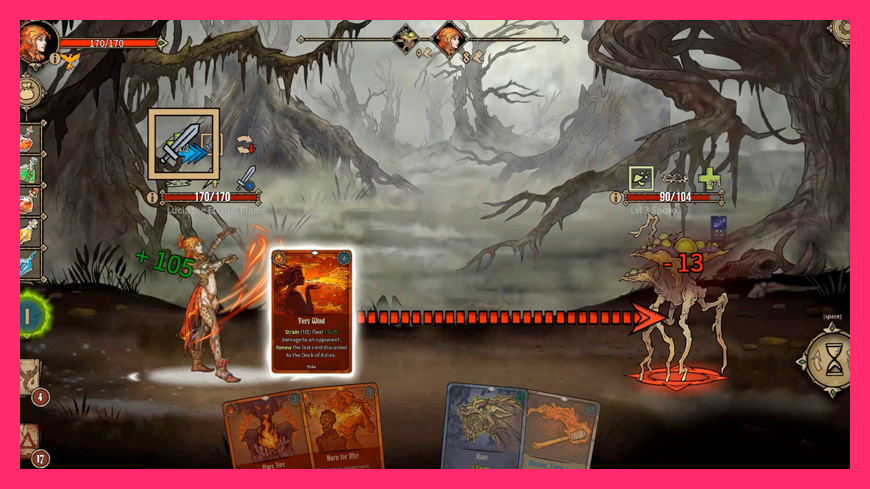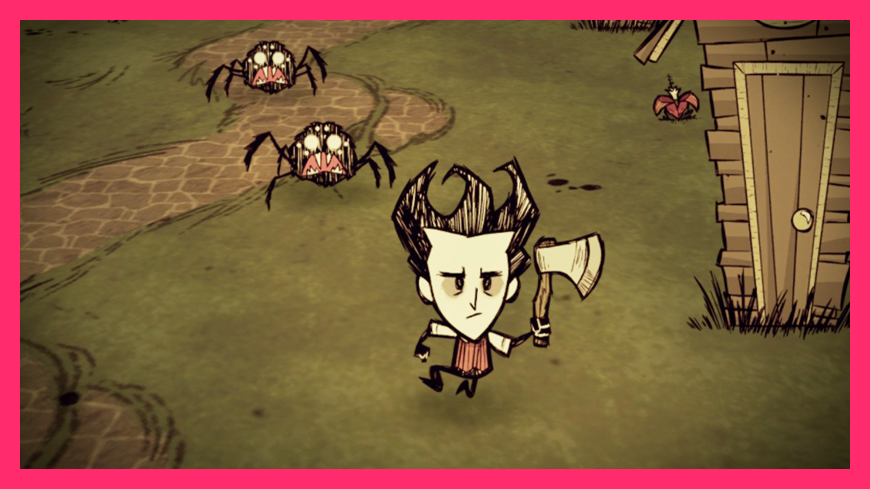Community
Game investment
Revenue
Monetize Your Pre-Launch: Earn Revenue, Build Community with Early Game Builds
June 12, 2023•10 min
Every great game had to start somewhere. It's a grueling and rewarding process that industry veterans know well, from the long hours to countless iterations. As your game approaches its final form, the fruits of your labor emerge as you launch your gold master to the masses.
But before presenting your finished product to eager players, what if you used the alpha and beta phases to build community, generate revenue, and gain valuable player feedback? In this post, we'll explore how leveraging key developmental milestones can work in your favor and examples of other games that executed these tactics to their benefit.
 Deck of Ashes, AYGames
Deck of Ashes, AYGames
 Don't Starve, Klei Entertainment
Don't Starve, Klei Entertainment
 Iron Harvest, KING Art
Iron Harvest, KING Art
 Star Wars Battlefront II, DICE/Electronic Arts, and Halo Infinite, 343 Industries/Microsoft
Star Wars Battlefront II, DICE/Electronic Arts, and Halo Infinite, 343 Industries/Microsoft
Building Community During Production
The average time for a game to stay in production can be anywhere from 1-4 years, depending on various factors, from the type of game you're creating, if it's a follow-up to an established game, or if it's the first of its kind. One thing you can be sure of is keeping an existing community interested in your next release or starting to cultivate a new base of players is a long and gradual process. The earlier you can begin fostering loyalty and attracting prospective individuals during earlier development stages, the more fans you'll have a month, a year, or even a decade later.Starting Your Community in the Alpha Stage
When a game has reached the alpha level, it's already gone through several production phases, including the first playable stage, the vertical slice stage, and the pre-alpha stage. You now have a mostly complete product, ready for a group of QA testers to begin the great bug hunt. While this phase is a dance between the dev and the quality assurance teams, it also presents an excellent opportunity to gain early fans. Early fans are your first ambassadors and advocates, often becoming your most loyal followers. They believe in you and will provide everything from staunch vocal support to financing to help bring your vision to life. To ensure these people stay with you and help spread the word, engage with them by showing that their support matters to you and is integral to producing the best game. In the same way that a QA team helps find issues and reports on the feel and balance of game mechanics, your fans can also offer valuable insights. Show them your early work and be honest with the difficulties and challenges you're working to overcome. This honesty can help strengthen your relationship with your fans and generate more understanding as you face various hurdles throughout production. The best way to build your community is by showing your game to current players of similar titles to help grow your initial audience exponentially. When AYGames presented its card-battler Deck of Ashes at Gamescom 2019, the developer managed to grab the attention of fans of a similar game, Slay the Spire. Deck of Ashes, AYGames
Deck of Ashes, AYGames
Taking your New Community into the Beta Stage
As you progress down the production pipeline, moving from alpha to beta, your team focuses on optimization. In beta you have a fully complete game. Most, if not all, bugs have been fixed, and any lingering placeholders are built out. This is exclusively a testing phase. The dev team's goal is not to add but to lock up all features. The community you started to grow during the alpha build is also ready to graduate to this new production phase. Your efforts will largely be the same as before, only now your focus will broaden as you begin outreach to bring in new, potentially less loyal, players. At this point, the number one marketing tip is to pitch your game to influencers. Not only do they have ready-made audiences for advertising, but targeting the right players for your genre is much easier. For example, if you have an action-platformer game, you can find influencers who mostly play and talk about these titles, share your game with them, and ask if they're open to trying out the beta on a live stream or creating a video. It's important to remember that you'll get more negative feedback during the beta stage of community expansion. If you had 100 people in alpha and 10% of them didn't like the game, that's no big deal. However, 10% of 1,000 people can suddenly matter. Dealing with growing negativity can quickly get you down, but you'll stay ahead of the curve if you address issues publicly and promptly. Remember, this tactic already has some real-world success stories. In 2013, Valve released its Early Access program, which led to some pivotal games gaining traction and being fine-tuned to perfection, like Klei Entertainment's, Don't Starve. Don't Starve, Klei Entertainment
Don't Starve, Klei Entertainment
GENERATING REVENUE DURING PRODUCTION
Developing a video game is expensive, and while most budgeting concerns are addressed well before reaching the production phase, being able to generate revenue can be the difference between launching a final product or shelving all your hard work for a later date. This is the time to trust and use early adopters to help finance your creation into reality. While the prospect of charging for an incomplete game may seem like you're selling a buggy product to the public, it's not. But it does take a level of strategy and care to get what you need out of the situation while still providing value to your base.Using a Crowdfunding Campaign
Crowdfunding can be an excellent resource for developers to generate revenue while in production. But just like shoes, crowdfunding is not a one size fits all solution. Researching the pros and cons of whether or not this path works best for you is a must. StartUps.com has a comprehensive list to help determine this, covering topics like centralized communication, retaining equity, market testing, and more. If you decide that a crowdfunding campaign is right for you, your next step is to choose a platform. The number of platforms available for crowdfunding has expanded over the years, giving developers more choices. From Kickstarter to Indiegogo, all the way to more independently geared platforms like GoFundMe and Patreon, you want to be aware of several factors:- Audience Size — Consider the number of people a potential crowdfunding platform can reach. More people = more eyes on your campaign.
- Fee Structure — Knowing what fees are associated with the platform, if any, can affect the amount of money you receive at the end of your campaign.
- Funding Model — Each platform has its own structure and rules on campaign length, money collection, and how they vet campaigners.
- International Reach — Not all platforms are available on a global scale. If you are targeting a specific region, ensure the platform you choose services in that area.
 Iron Harvest, KING Art
Iron Harvest, KING Art
Releasing Production Builds via Early Access and Pre-Orders
Since Valve launched the Early Access program on Steam in 2013, the trend of developers providing access to games that still need to be fully finished is rising. A shift has also occurred in the gaming landscape, where early adopters understand that purchasing titles before reaching the gold master stage means everything won't be completely polished. This symbiotic relationship has made gambling on early access a tactic that often works out in your favor. Hades creative director Greg Kasavin acknowledges this relationship, stating, "Now there are more early access games that learn from each other, and focus on both regularity of their update cycle and the communication back to their communities. I think it's made more players more comfortable that participating in early access can be a positive experience, that they're not just testing a game for free." Taking the early access route poses the challenge of effective communication. Clarifying the distinction between alpha and beta states is crucial. Specify your game's current build to avoid misunderstandings that could harm your reputation because players expected beta-quality gameplay but received a buggy alpha build instead. To help with transparency and tips on promoting your early access page appropriately, check out our guide for the best way to launch on Steam. Another option for generating revenue is via pre-order sales. It is worth noting that some platforms do not allow this option. However, if you can, selling pre-orders, founder's packs, and other digital goods is a powerful way to entice players to pick up your in-dev game straight from your own website. Review our guides for advice on why it's critical for your bottom line to offer pre-order sales and how to break into the pre-order market to help start your campaigns.THE POWER OF FEEDBACK AND POTENTIAL PITFALLS TO AVOID
One of the most significant advantages to pre-launching a game, in addition to community building and generating revenue, is receiving raw data in the form of player feedback. Real-world insight from a diverse group can help developers make strategic decisions on the best ways to improve their games. Benefits to trusting your new community include:- Leveraging a collective's power to resolve previously missed bugs or issues
- Creating an engaging game by refining gameplay mechanics
- Understanding what players want by expanding content and features
- Don't promise more than what is possible. Stay transparent and avoid broken promises that can damage your relationship with players.
- Don't get lost in the weeds! Maintain a balance between reacting to feedback and keeping sight of your game's vision.
- Don't lose sight of your vision. Overprioritizing player feedback and disrupting your timeline can strain your team's abilities and add more work than is manageable.
- Don't react defensively to criticism. Negative feedback will happen. Avoid reacting aggressively and risk turning away potential players and current fans.
 Star Wars Battlefront II, DICE/Electronic Arts, and Halo Infinite, 343 Industries/Microsoft
Star Wars Battlefront II, DICE/Electronic Arts, and Halo Infinite, 343 Industries/Microsoft
Conclusion
Working to brand and monetize your game before you finish it can be intimidating, but it makes all the difference. Early fans can become lifelong customers and brand ambassadors, making them many times more valuable in the long run than launch buyers. With the right timing and a little effort, you can capitalize on your alpha and beta builds to build your community and bring in a little revenue. Just be completely honest with your community as you work to achieve 100% completion. Are you a game developer looking for the best way to publish and market a new game? Create an account with Xsolla and explore our wide range of publishing and developmental tools today. If you want to learn how Xsolla can help reduce your workload and provide a simple solution that allows you to publish your game across multiple platforms, contact an expert from our team.Featured articles
Contact us
Talk to an expert
Ready to maximize revenue opportunities? Reach out to our experts and learn how to start earning more and spending less.